-
 bitcoin
bitcoin $109667.069529 USD
-3.03% -
 ethereum
ethereum $3936.685804 USD
-4.07% -
 tether
tether $1.000493 USD
0.01% -
 xrp
xrp $2.771823 USD
-4.74% -
 bnb
bnb $957.805027 USD
-5.34% -
 solana
solana $196.735100 USD
-6.68% -
 usd-coin
usd-coin $0.999727 USD
-0.01% -
 dogecoin
dogecoin $0.227355 USD
-5.12% -
 tron
tron $0.335205 USD
-0.81% -
 cardano
cardano $0.779256 USD
-3.59% -
 ethena-usde
ethena-usde $0.999900 USD
-0.06% -
 hyperliquid
hyperliquid $42.492095 USD
-6.61% -
 chainlink
chainlink $20.501853 USD
-4.34% -
 avalanche
avalanche $28.952606 USD
-11.21% -
 stellar
stellar $0.356038 USD
-3.93%
How should I handle a blunt KDJ indicator at a high level?
A high-level blunt KDJ indicator suggests weakening momentum in an overbought market, often signaling a potential reversal or consolidation, especially when confirmed by volume, on-chain data, and other technical tools like RSI or Ichimoku.
Sep 18, 2025 at 09:19 pm
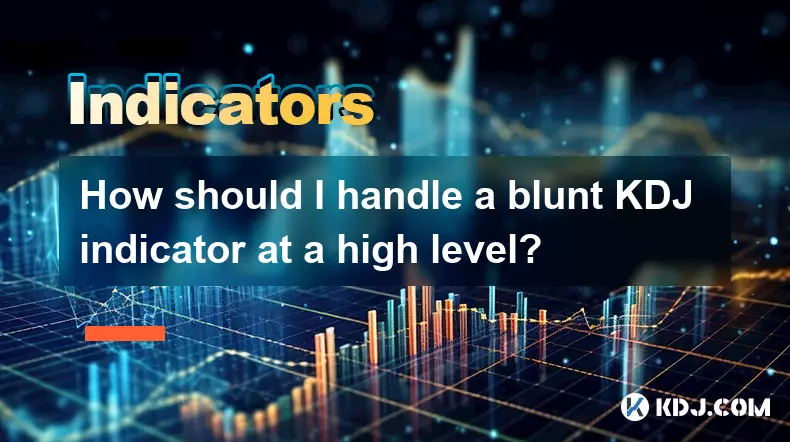
Understanding a High-Level Blunt KDJ Indicator
1. The KDJ indicator, widely used in cryptocurrency trading, combines the stochastic oscillator principles to identify overbought and oversold conditions. When the K, D, and J lines cluster near the upper boundary (typically above 80), it signals an overbought market. A 'blunt' or flattened movement at this high level suggests that momentum is stalling despite elevated prices.
2. This condition often occurs during strong bullish trends where buyers continue pushing prices upward, but with diminishing force. The lack of divergence in the lines indicates indecision among traders. In the volatile crypto markets, such patterns can precede sharp reversals or extended sideways consolidation.
3. Traders must assess whether the blunt KDJ reflects exhaustion or continuation. A prolonged flatline above 80 without a clear pullback may imply institutional accumulation or whale activity masking true sentiment. Monitoring volume spikes alongside the KDJ helps confirm if buying pressure remains sustainable.
Risk Management Strategies During KDJ Stagnation
1. Position sizing becomes critical when indicators show ambiguous signals. Reducing exposure by scaling out of long positions gradually prevents overcommitment. For instance, selling 25% of holdings when the KDJ first hits 80, another 25% if it stays above for three consecutive candlesticks, and preserving the remainder for breakout confirmation.
2. Stop-loss placement should adapt dynamically. Instead of fixed percentages, use recent swing lows or key support levels from on-chain data like realized price zones. This method accounts for actual market structure rather than arbitrary thresholds.
3. Avoid adding new long entries until the J line breaks below the K and D lines decisively. False breakouts are common in altcoin markets, especially during low-liquidity periods. Waiting for crossover confirmation reduces whipsaw risk significantly.
Integrating On-Chain Metrics with KDJ Signals
1. Combine exchange inflows/outflows with KDJ readings. If the indicator is stuck at 90 while large addresses deposit tokens into exchanges, it hints at impending profit-taking. Glassnode or Santiment data can reveal these movements before price reacts.
2. Monitor funding rates on perpetual futures. Elevated long-side funding combined with a stagnant KDJ above 80 suggests excessive leverage. Such environments often trigger cascading liquidations upon minor sell-offs, accelerating downside moves.
3. Use MVRV (Market Value to Realized Value) ratio to validate KDJ extremes. If MVRV exceeds 3.5 while KDJ plateaus, historical precedents show high probability of mean reversion within days. Bitcoin’s 2021 peak and Ethereum’s post-merge rally exhibited similar confluence.
4. Whale transaction clustering detected via blockchain explorers adds context. A blunt KDJ coinciding with multiple large transfers to cold wallets might indicate accumulation, altering the bearish implication of overbought oscillators.
Alternative Technical Tools to Confirm KDJ Readings
1. Apply Ichimoku Cloud analysis to determine trend strength independently. When the price trades above the cloud while KDJ stagnates, the bias remains bullish unless the Tenkan-sen crosses below Kijun-sen. This multi-layered approach filters noise inherent in single-indicator systems.
2. RSI divergence detection complements KDJ behavior. Even if KDJ lines flatten, hidden bullish RSI divergence on higher timeframes (e.g., daily charts) may justify holding partial positions. Conversely, visible bearish RSI divergence amplifies reversal likelihood.
3. Bollinger Band width contraction during KDJ stagnation warns of imminent volatility expansion. A squeeze followed by a close beyond the upper band increases confidence in continuation; a rejection candle suggests exhaustion.
Frequently Asked Questions
What does a KDJ reading above 90 indicate in Bitcoin trading?A KDJ value exceeding 90 signifies extreme overbought conditions. In Bitcoin’s case, this has historically occurred during parabolic phases, often preceding corrections of 20% or more. However, during halving cycles, such levels can persist longer due to FOMO-driven speculation.
Can the KDJ indicator be effective for altcoins with low market capitalization?Yes, but with caveats. Low-cap altcoins experience sharper price swings, causing KDJ to generate frequent false signals. Adjusting the smoothing parameters (e.g., using 9-period instead of 14) improves responsiveness. Pairing it with volume-weighted MACD enhances reliability.
How do I adjust KDJ settings for different crypto timeframes?For 15-minute charts, reduce the default periods to 6-3-3 for faster signals. On weekly charts, extend to 21-9-9 to filter out noise. Always backtest changes against historical drawdowns specific to the asset being traded.
Disclaimer:info@kdj.com
The information provided is not trading advice. kdj.com does not assume any responsibility for any investments made based on the information provided in this article. Cryptocurrencies are highly volatile and it is highly recommended that you invest with caution after thorough research!
If you believe that the content used on this website infringes your copyright, please contact us immediately (info@kdj.com) and we will delete it promptly.
- XRP Price: October Rally on the Horizon After September Consolidation?
- 2025-09-26 16:25:13
- Bitcoin Price Wobbles: Investors Buy the Dip as Powell's Words Stir Uncertainty
- 2025-09-26 16:25:13
- Kaspa Price, Smart Contracts, and the 2026 Forecast: A New York Minute
- 2025-09-26 16:30:01
- Bitwise, Hyperliquid ETF, and HYPE Token: What's the Deal?
- 2025-09-26 16:45:14
- B HODL, Bitcoin, and Treasury Purchases: The New Institutional Playbook
- 2025-09-26 17:05:15
- Cloudflare, Stablecoins, and AI Agents: A New Era of Automated Finance
- 2025-09-26 16:45:14
Related knowledge
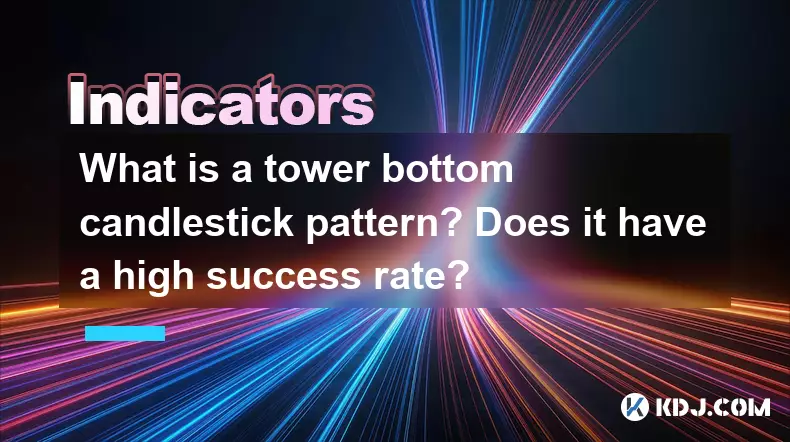
What is a tower bottom candlestick pattern? Does it have a high success rate?
Sep 22,2025 at 07:18am
Tower Bottom Candlestick Pattern Explained1. The tower bottom candlestick pattern is a reversal formation that typically appears at the end of a downt...
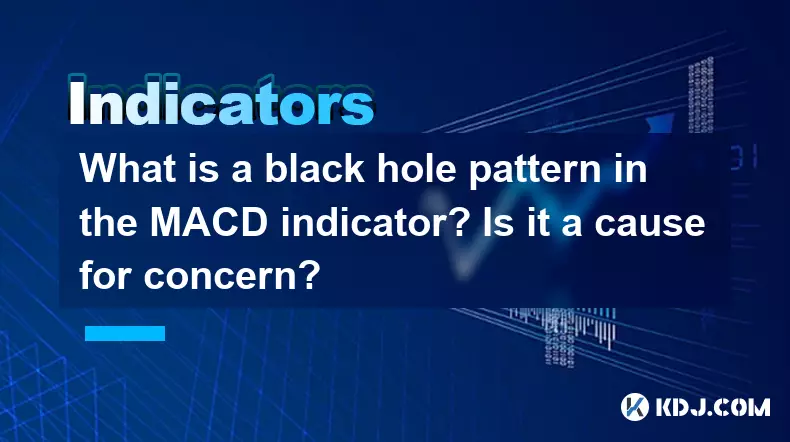
What is a black hole pattern in the MACD indicator? Is it a cause for concern?
Sep 21,2025 at 06:54pm
Bitcoin's Role in Decentralized Finance1. Bitcoin remains the cornerstone of decentralized finance, serving as a benchmark for value and security acro...

How can I use the psychological line (PSY) to determine market sentiment?
Sep 17,2025 at 02:19pm
Understanding the Psychological Line (PSY) in Cryptocurrency TradingThe Psychological Line, commonly referred to as PSY, is a momentum oscillator used...
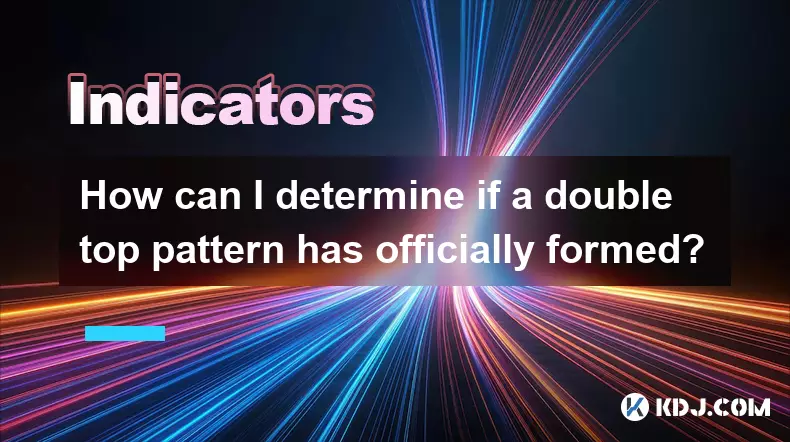
How can I determine if a double top pattern has officially formed?
Sep 21,2025 at 03:18am
Understanding the Structure of a Double Top Pattern1. A double top pattern consists of two distinct peaks that reach approximately the same price leve...
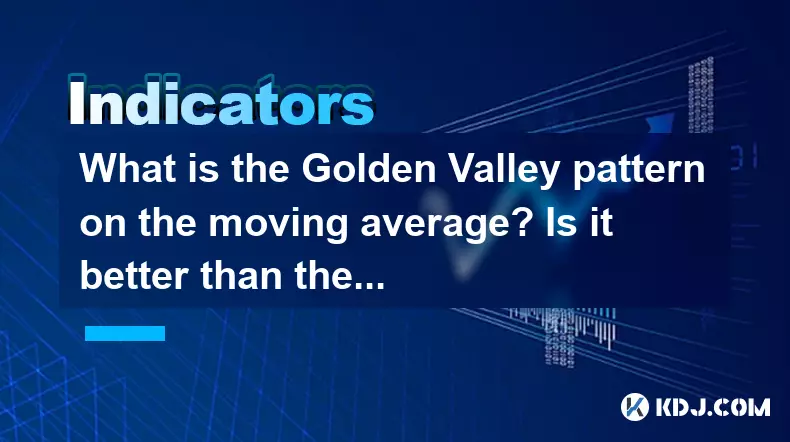
What is the Golden Valley pattern on the moving average? Is it better than the Silver Valley pattern?
Sep 21,2025 at 02:54pm
Understanding the Golden Valley Pattern in Moving Averages1. The Golden Valley pattern is a technical formation observed in cryptocurrency price chart...

What does a death cross of the RSI in the strong zone (above 50) mean?
Sep 17,2025 at 10:54pm
Understanding the Death Cross in RSI Context1. The term 'death cross' is traditionally associated with moving averages, where a short-term average cro...

What is a tower bottom candlestick pattern? Does it have a high success rate?
Sep 22,2025 at 07:18am
Tower Bottom Candlestick Pattern Explained1. The tower bottom candlestick pattern is a reversal formation that typically appears at the end of a downt...

What is a black hole pattern in the MACD indicator? Is it a cause for concern?
Sep 21,2025 at 06:54pm
Bitcoin's Role in Decentralized Finance1. Bitcoin remains the cornerstone of decentralized finance, serving as a benchmark for value and security acro...

How can I use the psychological line (PSY) to determine market sentiment?
Sep 17,2025 at 02:19pm
Understanding the Psychological Line (PSY) in Cryptocurrency TradingThe Psychological Line, commonly referred to as PSY, is a momentum oscillator used...

How can I determine if a double top pattern has officially formed?
Sep 21,2025 at 03:18am
Understanding the Structure of a Double Top Pattern1. A double top pattern consists of two distinct peaks that reach approximately the same price leve...

What is the Golden Valley pattern on the moving average? Is it better than the Silver Valley pattern?
Sep 21,2025 at 02:54pm
Understanding the Golden Valley Pattern in Moving Averages1. The Golden Valley pattern is a technical formation observed in cryptocurrency price chart...

What does a death cross of the RSI in the strong zone (above 50) mean?
Sep 17,2025 at 10:54pm
Understanding the Death Cross in RSI Context1. The term 'death cross' is traditionally associated with moving averages, where a short-term average cro...
See all articles










































































